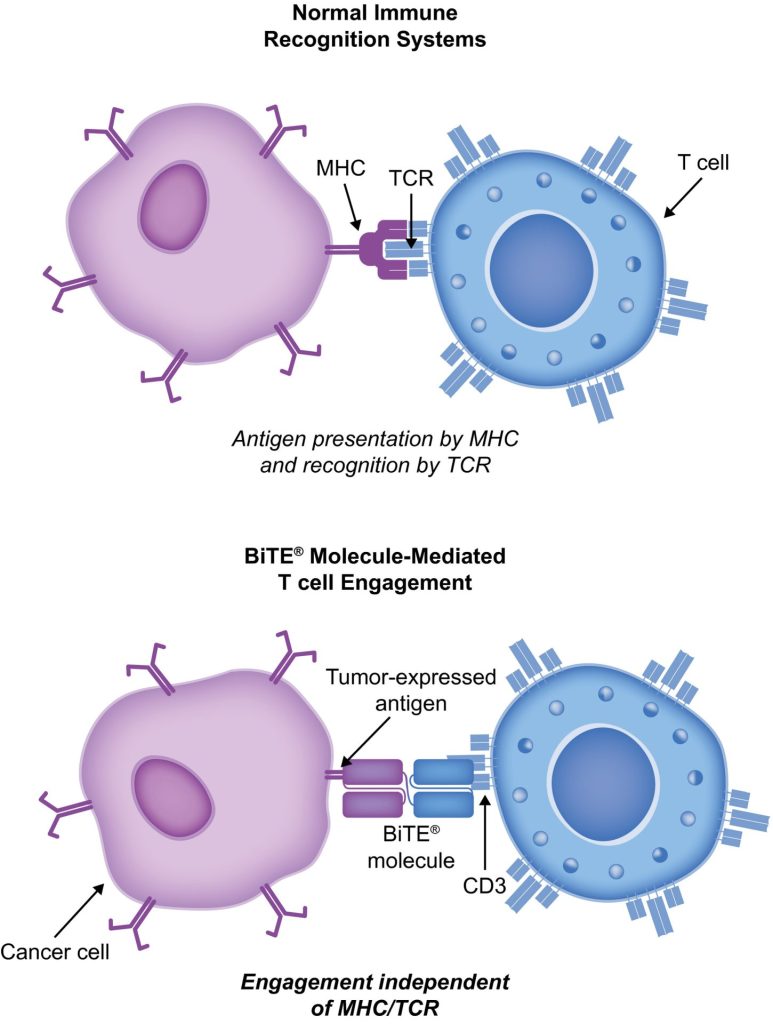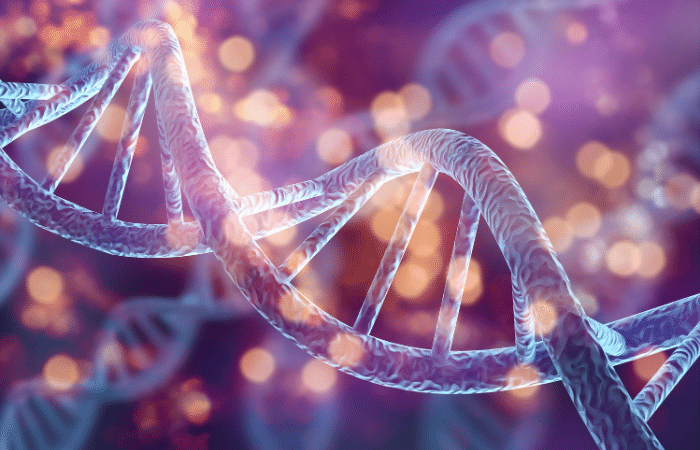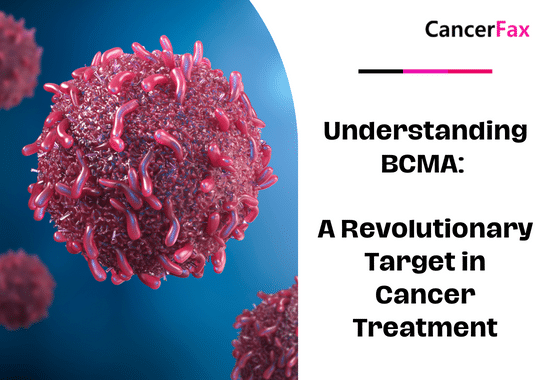Immuno-oncology is a way to treat cancer by using the body’s immune system. BiTE (bispecific T-cell engager) technology is a targeted immuno-oncology platform that binds a patient’s own T cells to cancer cells. Because BiTE technology is flexible, it is easy to make molecules that attack tumor-specific antigens, which makes immuno-oncotherapy possible. Blinatumomab was the first standard BiTE molecule to be approved. It targets CD19 surface antigens on B cells and is mostly unaffected by genetic changes or escape mechanisms inside cells. More BiTE molecules are being made to treat other blood cancers (like multiple myeloma, acute myeloid leukaemia, and B-cell limfoma non-Hodgkin) and solid tumours (like prostate cancer, glioblastoma, stomach cancer, and small-cell lung cancer). BiTE molecules that have a longer half-life than the standard ones are also being made. With BiTE technology, advances in immuno-oncology could make it easier to treat both blood and solid tumours and make them more effective when used with other treatments.
Naon terapi BiTe?
Immuno-oncology therapies are scientifically proven ways to treat different types of solid and kangker getih. Hematologic cancers are a good fit for treatments that target the immune system because cancerous blood cells move around with immune cells. Several immunotherapy pangobatan pikeun kanker aya dina karya.
Monoclonal antibody checkpoint inhibitors that stop the binding of checkpoint proteins (like PD-1 and CTLA-4) are useful against many types of cancer. They work well and are safe for many solid tumours, especially when they target PD-1. Non-small-cell lung, kidney, and bladder cancers have all been treated successfully with these drugs. But many people don’t react to checkpoint inhibitors or get sick again after taking them. Except for non-Hodgkin lymphoma, most results on hematologic cancers have been disappointing, especially for myeloma and leukaemia, where the overall response rate in approved indications ranges from 12.0% to 48.5%.8-15.
Other immuno-oncology treatments, on the other hand, have a higher success rate. Chimeric antigen-receptor (CAR) T-cell therapies change a patient’s T cells to attack a specific cellular antigen, such as CD19 in the treatment of B-cell malignancies and B-cell maturation antigen (BCMA) in the treatment of sababaraha myeloma (MM). CAR T-cell treatments have shown promise in treating hematologic cancers. They haven’t been as effective in treating solid tumours, but there have been some good results with neuroblastoma, human epidermal growth factor receptor tumours, and non-small-cell lung cancer. The genetic modification and in vitro multiplication of T cells take a long and complicated manufacturing process. This is a downside of this therapy because it makes it harder for patients to get this treatment quickly and in large numbers. The fact that lymphodepletion through chemotherapy preparation must be done first as a requirement for improved effectiveness is also a drawback.
Terapi BiTE (bispecific T-cell engager) ngahubungkeun sél T pasien sorangan ka antigén anu diekspresikeun tumor. Ieu ngaktifkeun kamampuan sitotoksik sél T pasien sorangan pikeun maéhan kanker tanpa ngarobih gén sél T atanapi peryogi tumuwuh atanapi ngamanipulasi aranjeunna di luar awak. Molekul BiTE tiasa dianggo nyalira salaku ubar atanapi sareng pangobatan sanés supados langkung efektif.
Mékanisme tindakan BiTe
BiTE molecules are antibody constructs with two binding domains. One recognises tumor-expressed antigens (such as BCMA, CD19, or -like protein [DLL3]), and the other, CD3, recognises T cells (Fig. 1). Two single-chain variable fragment (scFv) regions from monoclonal antibodies are connected by a flexible peptide linker to make the binding domains. The first scFv binding region can be changed to target any surface antigen, so it can be used right away to treat a wide range of tumours and can be used again later. The second scFv binding region always binds to CD3, which is a part of the T-cell receptor complex that never changes. When a BiTE molecule interacts with both a cytotoxic T cell and a tumour cell, the T cells begin to multiply. This increases the amount of effector cells and makes BiTE therapy more effective. Then, the death of cancer cells is started. BiTE molecules can get any T cells to do this because they don’t need co-stimulation or the usual processes of the major histocompatibility complex.

Blinatumomab is the first and only BiTE therapy that has been approved. It targets the CD19 receptor on both normal and cancerous B cells. It is a highly potent molecule with cytotoxic effects seen at low exposures (10–100 pg/mL)26. In its presence, T cells can perform serial-target lysis, quickly binding to and killing many cells. This is how BiTE therapies work, and it can be seen in other BiTE molecules that are still in research. In leukemia limfoblastik akut (ALL), blinatumomab has been shown to be effective and safe. In 2014, the US Food and Drug Administration gave it fast approval, and in 2017, it got full approval for relapsed or refractory (R/R) B-cell precursor (BCP) ALL. In 2018, accelerated approval was given to blinatumomab for treating BCP-ALL with minimum residual disease (MRD). This was the first approval for this use. In November 2015, the European Medicines Agency also gave it a green light for BCP-ALL with a Philadelphia chromosome (Ph) that is negative and R/R. Blinatumomab is approved for R/R BCP-ALL in adults and children in 57 countries, including Japan, all countries in the European Union, Canada, and Australia.
Blinatumomab pikeun pengobatan pasien kalayan BCP-ALL
Blinatumomab geus robah cara BCP-ALL dirawat. Dibandingkeun sareng kémoterapi standar-of-care (SOC), éta parantos ningkatkeun kasalametan umum (OS) sareng ngirangan jumlah efek samping (AEs). Sababaraha studi penting, kaasup percobaan dikawasa randomized, némbongkeun yén blinatumomab téh aman tur lumaku pikeun BCP-ALL di duanana dewasa sarta barudak. Terapi sél T-mobil, Aya ngan data tina 2 studi single-arm (clinicaltrials.gov ID NCT01626495 na NCT01029366) nu 25 barudak (umur 5-22) jeung 5 sawawa (umur 26-60) kalawan R / R BCP-ALL sarta T-sél ALL dirawat. Tapi hasilna anu ngajangjikeun (réspon lengkep [CR] dina 90%, remisi sustained kalawan 6-bulan acara-gratis survival di 67%, sarta hiji survival sakabéh laju [OS] 78% [median nurutan-up, 7 bulan; rentang, 1-24 bulan]).
Ulikan TOWER (A Phase 3, Randomized, Open Label Study Investigating the Efficacy of the BiTE Antibody Blinatumomab Versus Standard of Care Chemotherapy in Adults Subject With Relapsed/Refractory B-Precursor ALL; clinicaltrials.gov identifier NCT02013167) dibandingkeun efek tina blinatumomab kémoterapi sawawa / hémoglobin R. CP-ALL. Kusabab jalma hirup langkung lami, pangajian dihentikan awal. AEs dina grup blinatumomab éta sarua jeung nu ditempo dina studi saméméhna, sarta blinatumomab miboga ongkos AE paparan-disaluyukeun handap SOC.34 Blinatumomab ogé lumaku pikeun jalma kalawan Ph-positip, Urang Sunda / Urang Sunda BCP-ALL jeung barudak kalawan Ph-négatip, Urang Sunda / Urang Sunda BCP-ALL.
30% to 50% of people with BCP-ALL in complete hematologic remission show persistent MRD. In the single-arm, phase 2 BLAST study (A Confirmatory Multicenter, Single-Arm Study to Assess the Efficacy, Safety, and Tolerability of the BiTE Antibody Blinatumomab in Adult Patients With MRD of B-Precursor Acute Lymphoblastic Leukaemia; clinicaltrials.gov identifier NCT01207388), blinatumomab was tested on patients with BCP-ALL in first or later complete After blinatumomab treatment, 78% of patients who were MRD positive became MRD negative. The 5-year OS study showed a median OS of 36.5 months, and more than half of those who had a complete MRD response after the first cycle of blinatumomab were still alive at 5 years, which suggests that the treatment might be able to cure some patients. AEs were seen that were linked to sindrom sékrési sitokin (CRS).31 Other studies, like NCT03023878 and NCT03340766, are still looking at blinatumomab in first-line settings and in combination with other treatments.
CD19-targeted treatments have been linked to failure because of the loss of CD19 antigen after treatment. The failure rates for blinatumomab range from 8% to 35%, and for CAR T-sél terapi, they range from 39% to 65%.36-40 We don’t fully understand what causes therapy to fail, but one possibility is immunoediting, in which antigen loss is caused by a T-cell-dependent process called immunoselection, which lets tumour cells get away.41 Lineage switch and epitope loss under therapy pressure have also been suggested as ways for tumours to escape treatment. However, a recent study on epitope loss found that some CD19 isoforms that help CAR T-cells escape were already present at the time of diagnosis. This suggests that combining treatments might be helpful. Another thing that can cause immunotherapy to fail is called “inhibitory T-cell signalling.” In this case, the blocking programmed death ligand-1 (PD-L1) is interesting because it is more common in B-cell ALL cells from patients who don’t respond to blinatumomab and can make CD3 BiTE molecules less effective.43 By making a CD28/PD-L1 BiTE that triggers the CD28 co-stimulatory signal instead of the inhibitory signaling pathway that is usually seen when a T cell binds to a PD-L1-expressing cancer cell, this inhibition could be turned off.43 Dual-targeted CAR T cells are also being looked into as a way to make up for the loss of tumour antigens. This can be done by modifying each T cell with 2 CAR molecules and 2 different binding domains (dual-signaling CAR) or by putting 2 different binding domains on 1 CAR molecule at the same time (TanCAR).
Kajadian ngarugikeun sareng BiTE sareng manajeménna
Dina studi klinis tina blinatumomab, AE anu paling umum nyaéta muriang, jumlah sél getih bodas rendah, sareng jumlah trombosit rendah. Sababaraha résiko anu paling penting nyaéta CRS, neurotoxicity, sareng kasalahan narkoba. Neurotoxicity ogé tiasa kajantenan nalika perlakuan CAR T-spésifik CD19, tapi éta sanés kusabab CD19. Hasil ulikan fase 1/1b anu masih lumangsung ngeunaan target CD20/CD3 nunjukkeun yén AE SSP kelas 3 atawa saluhureuna jarang (3% tina sakabéh AE kelas 3). Seringna, réaksi blinatumomab ka CRS hampang, tapi dina kasus anu jarang, éta tiasa parah sareng ngancam kahirupan. Réaksi radang tiasa diréduksi ku kortikosteroid. Pikeun nurunkeun kamungkinan CRS, langkung saé masihan infus prednisone atanapi dexamethasone sateuacan dosis munggaran blinatumomab sareng ningkatkeun dosis lalaunan. Pamakéan kortikosteroid ieu sateuacan molekul BiTE sanés masihan alesan pikeun ngagunakeun dexamethasone salaku prémedikasi nalika nganggo molekul BiTE sanés. Nanging, henteu écés naha éfék ieu tiasa diterapkeun ka sadayana platform BiTE, sareng cara-cara sanés pikeun nungkulan CRS ayeuna nuju ditaliti. Interleukin 6 mangrupikeun sitokin anu nyababkeun CRS sareng luhur pikeun jalma anu ngagaduhan éta. Tocilizumab, anu meungpeuk reséptor interleukin-6, parantos dianggo pikeun ngubaran CRS anu parah pisan saatos perawatan sél T CAR.49 Di rumah sakit, inhibitor faktor nekrosis tumor ogé parantos dianggo pikeun ngubaran CRS.


